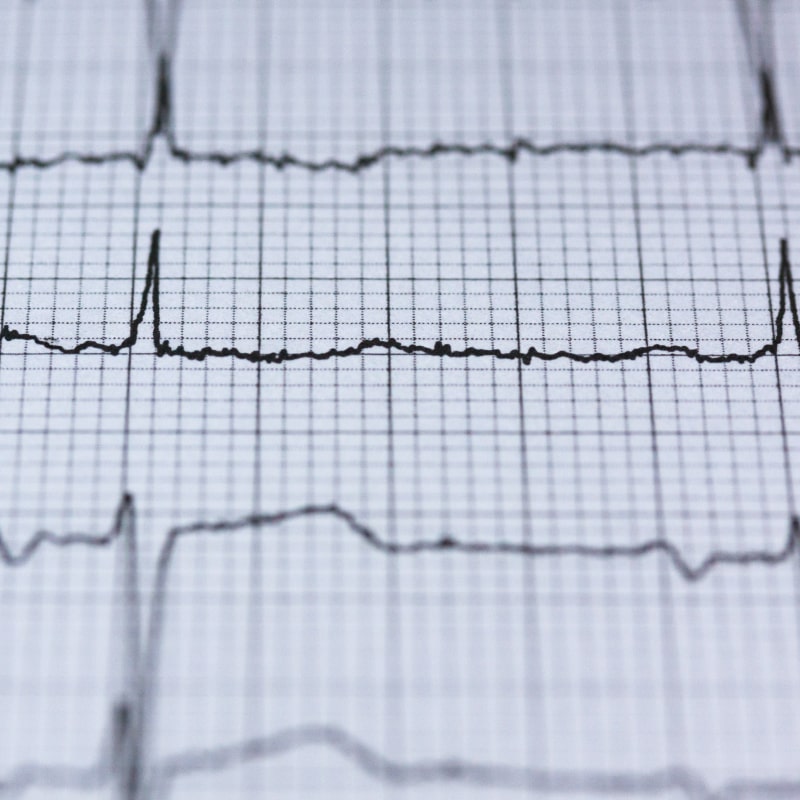
When it comes to providing objective data about our own health and fitness, we are often our own worst enemies. People tend to have a need to do more, sleep less, train more, push harder and work longer. We convince ourselves that we’re invincible and impervious to the stressors we place on our bodies and minds. How often do you tell someone you’re overworked, deprived of sleep, over-trained, underfed and stressed beyond repair? Being reflective and honest about your state of stress is the first step to identifying your own limitations. Determine what’s holding you back from reaching your goals (in and out of the gym) and measure them.
The ability to provide quantitative biofeedback has shown to help control physiological responses to stress. It’s an effective way for athletes/clients/weekend warriors to learn how to measure their mental and physical responses to stress. This is NOT easy to do. Often, the degradation of our coping mechanisms are masked by what we think is “normal”. We often feel tired, irritable, hungry, “blah” or find it difficult to make it through the day – day after miserable day.
HOW IT WORKS
ECG (electrocardiography) biosensors like a heart rate (HR) monitor have been able to capture more comprehensive data about overall health, wellness and performance by measuring both HR and heart rate variability (HRV).
HR is an average measurement of beats-per-minute. It varies by activity level, constantly increasing and decreasing depending on the demand of the body. While desired, a low resting HR itself should NOT be considered a leading overall indicator of heart health.
Before we dive into HRV, let’s have a cardiology 101 lesson:
Your heart rate has two major working systems: electrical and mechanical. An electrical impulse is sent though the heart to tell the muscles to contract and push blood out. The mechanical component you can feel (your heartbeat and your pulse). The electrical can only be measured with an ECG device (a cardiac monitor or a HR monitor).
Take note of the R wave – it’s important!!!! The R wave is the first upward deflection after the P wave and part of the QRS complex. The R wave indicates ventricular depolarization. That is the electrical impulse which makes your ventricles pump blood out of the heart creating your pulse. Your HR monitor looks at your “R wave” intervals (space between each R wave) to estimate your average HR. The higher your HR, the closer your R to R interval. The lower your HR, the wider your R to R interval.
Now… What is HRV and why is it so important?
Heart rate variability (HRV), is a measure of each heart beat’s variation over a period of time. The heart monitor is able to assess the very minuscule difference in R to R interval and takes an average over a period of 2-5 minutes.
Your HRV is an assessment of your heart’s ability to accelerate and decelerate quickly and efficiently to meet the body’s immediate needs. This is what you want. For your HR to increase in times of need (run away from danger or fight your way to the front of the donut line), and slow down to focus on other bodily functions (like digesting the 7 plates of food you ate at the buffet or the dozen donuts you just snatched up).
…With us so far?????
An HRV can vary based on a number of factors, but traditionally the HIGHER the average HRV means the “healthier” you are.
…And now I just lost you.
YES, YOU WANT YOUR HRV HIGH! So, why would you want your HR bouncing around instead of beating like a metronome???
Simply put, you want a healthy tug-of-war between the two systems that control your HR (and HRV). Since our sympathetic nervous system and your parasympathetic nervous system are always in a tug-of-war battle, they both need to get used to keeping each other in check. You sympathetic nervous system is your gas pedal. It’s responsible for many changes including accelerating your heart beat or creating that adrenaline you get during fight or flight. Your parasympathetic nervous system is your brake. It slows things down and allows for some rest and recovery after being on the gas pedal, such as digestion.
What you DON’T want is for them to be equal (a very boring tug-of-war match) or even worse, trying to drive a car with your foot on both the gas and brake. We want variation in your HR, aka high HRV.
In general, a high HRV indicates dominance of the parasympathetic response, the side of the autonomic nervous system that promotes rest, relaxation, digestion, sleep, and recovery (GOOD).
A low HRV indicates dominance of the sympathetic response, the fight or flight side of the nervous system associated with stress, overtraining, and inflammation (NOT GOOD when it’s chronic).
NOW, the MILLION-dollar question? WHY should you care?
AWARENESS. You can’t fix the problem if you haven’t identified it. A body in a state of chronic stress will be resistant to any progress you’re trying to make. Thus, the constant bombardment of catecholamine’s and glucocorticoids (including cortisol) creates detrimental affects on your body.
Aside from the acute affects of increased sympathetic response (high blood pressure, high HR, high blood sugar, decreased peristalsis/digestion), long-standing stress promotes even more negative effects.
Sustained high levels of catecholamines/glucocorticoids like cortisol are directly linked to:
- Blood sugar imbalance and diabetes
- Gastrointestinal problems (including poor nutrient uptake and decreased secretory IgA (SIgA) which serves as the first line of defense in protecting the intestinal epithelium from toxins and pathogens)
- Weight gain and obesity with decreased muscle mass and bone density
- Cardiovascular disease
- Fertility problems
(See these items listed in detail here.)
And that is why going to the gym to get your 5th workout in after a restless night which you tried to counteract with your gallon of Red Bull, will only FURTHER your stressed state.
Seeing a low or downward trending HRV might be a great indication that you should take a day (or two, of 7) OFF to rest, recover, rejuvenate and relax OR start to prioritize your lifestyle to promote stress-reduction!
Once you focus your efforts on reducing your stress, increasing parasympathetic tone, and bring your body (and it’s hormones) back to homeostasis you should get RESULTS! After all – That’s what you’re looking for: weight loss, increased strength, hormonal balance, general improved demeanor, a GREAT night sleep! (Not to mention reducing risk for stress-related illness, such as cardiac problems, asthma, and diabetes).
Typical HRV Scores
Please remember the trend is more important than an individual number:
- 80-90 high HRV score
- 70-80 moderate HRV score
- 60-70 fair HRV score
- < 60 poor HRV score
HOW to increase your HRV?
- Focus on parasympathetic nervous system activation: actively focus on recovering and stress reduction (yoga/medication/breathing techniques/massage)
- Sleep more: be an animal in bed! Preferably a koala that sleeps 22 hours a day.
- Eliminate foods and supplements that are adding to the problem: anything which causes inflammation in the gut will affect your parasympathetic system and lower your HRV. Eat a variety of macro/micronutrients from whole foods, drink water, find a good probiotic, take NATURAL stress reducing and anti-inflammatory supplements and STOP taking stimulants (energy drinks/pre-workouts).
- Improve your conditioning by increasing your aerobic stamina. Mitochondria (the power house of our cells) transform energy from food into cellular energy. Exercise increases the number of mitochondria improving your body’s ability to produce energy. The more mitochondria you have and the better they function, the higher your HRV will be.
References:
The master himself, Coach Eugene Teo
The Introductory Guide to Heart Rate Variability
Understanding and Using HRV Technology for Exercise – A Beginners-Guide to HRV – Part 2







